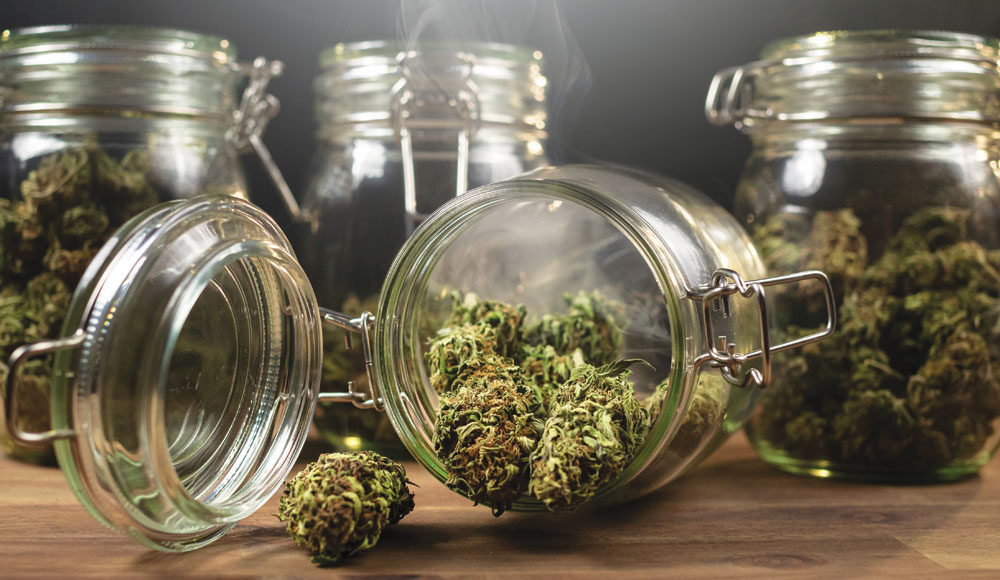The headlines were filled last week with the news that, for the first time, more Americans are using weed on a daily or near-daily basis than are drinking alcohol with similar frequency, according to a new study. Besides being fodder for obvious jokes from late-night hosts, the study was heralded as good news for advocates of cannabis reform. And in a way, it is. But in other ways, it isn’t. Or at least it’s more complicated than the headlines had it.
Comparing booze and weed can be a fraught undertaking. One huge difference is especially problematic: you can drink with no intention of getting drunk, but if you use cannabis that contains THC you’re using it to get high (unless it’s strictly for medical use, and even then you usually get high).
Many “social drinkers” get a buzz whether that’s their intent or not. But many have a single drink or glass of wine, or two, or even three, and feel nothing at all, just as they intended. “Daily drinking” can mean that, or it can mean downing a quart of Jack Daniels every day.
Similarly, eating a 5-milligram gummy after work every day is very different from ripping three bong hits every waking hour. But, while being super-stoned all day is generally not a great idea, it’s still way better than being drunk out of your mind. Comparing the rates of “daily use” of the two substances doesn’t shed much light on the personal and social impacts.
That doesn’t mean the research is meaningless. The study, from Jonathan Caulkins, a professor who specializes in drug policy for Carnegie Mellon University, shows just how normalized cannabis has become, despite still being illegal in a bunch of states and at the federal level, so it’s good news for the cannabis industry and for advocates for legal reform. But what does it tell us otherwise?
In very general terms, if people are drinking less, that’s good, and if they’re replacing their alcohol intake with weed, it’s not necessarily bad (the study didn’t look at this question). If they’re opting to get high rather than straight-up drunk, it’s very good indeed: just for starters, they’ll be way less likely to wrap their cars around trees or hurl small appliances at their spouses.
Alcohol is still way more popular than cannabis in general. The study, published by the journal Addiction, counted only daily or near-daily use of cannabis, which Caulkins says has increased by 1,500% since 1992, and alcohol. Caulkins got his data from the National Survey on Drug Use and Health, which is published annually by the federal government.
Caveats abound, as Caulkins acknowledges. The survey comes from self-reports, which are always problematic. Furthermore, several methodologies for the federal survey have changed over the years, such as sampling methods and the fact that participants are now paid $30. While the overall trends are clear enough, the results can’t help but be skewed when comparing the older surveys to the newer ones.
Perhaps the biggest thing that has changed since 1992 is that “daily use” back then generally meant smoking, often whole joints or bowlfuls. Now, “daily use” might mean the aforementioned gummy or a tiny hit off a vape. Nevertheless, Caulkins says that, because high-THC products are far more available now, average THC ingestion among daily users has skyrocketed, from 5 milligrams per day to about 300, an astonishing increase, and perhaps even troubling. But to whatever degree heavy drinkers are opting instead to be heavy pot users, it could be seen as a net positive.
But the study didn’t look at that question (the federal survey counts people who have “one or more drinks” daily, meaning that people who drink a glass of wine with dinner are counted the same as people who drink 14 shots of Wild Turkey every night). It was really a study of the habits of daily pot users, but it was sold (at least by the media) as being about how pot has eclipsed alcohol. That’s not true in general, and it’s not even really true just in terms of daily use, given the differences in how the substances can be consumed.













